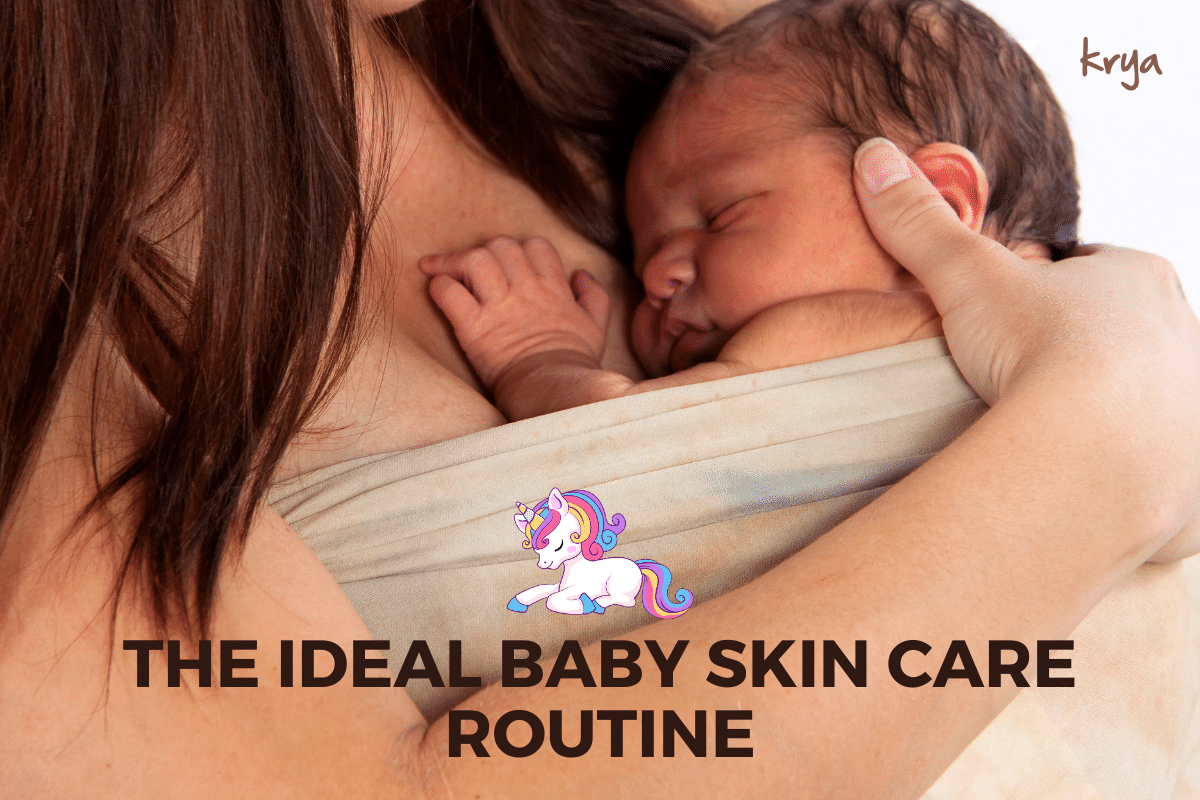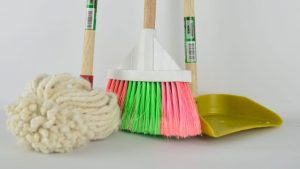This post was last updated on August 12, 2021 by Preethi Sukumaran
A few days ago I noticed my neighbour also getting ready her two year child ready for school. Just before bundling that child into the car, her mother was slathering her with sunscreen, made for babies. Sunscreen was evidently recommended by the school authorities, who these days are really careful about the children entrusted to them.
The sunscreen encounter got me thinking about the wide array of toxics that are marketed to and find their way into the bodies of children across the world today.
Here are the numbers
In this series on toxics, I have relied on US data due to the paucity of Indian studies. A recent study by the US Centre for Disease Control & Prevention concludes that BPA and 7 other toxics are building up within the bodies of their children. Over 60% of the children tested had significant residues of Bisphenol A (BPA) and other phenolic toxins like benzohenone-3, Triclosan, 2-4 dichlorophenol, and 3 parabens.
Bisphenol A is a common chemical found in plastic utensils and dishes, even those sold for children’s use. Triclosan is found in anti bacterial soaps, wipes and washes, Benzophenone-3 is also called oxybenzophenone is a common ingredient in many sunscreens. Dichlorophenols are used in many herbicides and pesticides and parabens are found in many skin and hair care products.
In India, apart from these, heavy metals are a particular concern. A study done by Centre for Science & Environment in 2014, found that Mercury, prohibited for use in cosmetics in India, was found in 44% of the fairness cream brands surveyed. Lipstick samples tested had both chromium (50%) and nickel (43%). And this despite what you may assume, is a concern for children as many paediatricians and dermatologists attest to the fact that in India colour cosmetics and fairness creams sold to women routinely get applied on children as well.

Colour cosmetics: a special concern for parents of young girls in India
We are extremely concerned about the the chemical and environmental toxin load on children’s bodies. As we have seen in our earlier articles on environmental toxins and industrial chemicals, many of them have a debilitating effect when exposed at an early stage. Children are particularly vulnerable at various stages in their development to the effect of endocrine disrupter chemicals and carcinogens. The Endocrine Society’s statement on these 2 chemical classes states that there is a latency of exposure: and that these chemicals when exposed at a critical developmental window can do great harm even in small doses.

There is no safe dose in certain chemical classes
The blood work of children being examined in western countries reveals environmental toxins in alarmingly high quantities. The route of exposure to these toxins are multiple. Some come through skin contact; some from cleaning product residue in the food we eat; some through the leachates of the potentially harmful cookware & cutlery we use, and through inhalation.
In this piece, we have focused on 3 potentially toxic products in our homes, and discuss alternatives to these for our children.
1. Sunscreen or Sunblock
The general recommendation from doctors in the US and Australia today appears to be this: Everyone regardless of skin colour should apply at least SPF 15 daily, even in winter. Suddenly in the space of a few decades, sunscreen is being positioned as an essential item of daily life, even for people who do not work in the fields or move around on horseback.
The sunscreen industry took off particularly when it became accepted that those with lighter skins like Caucasians were at higher risk. Also at risk were those living under a depleted ozone layer like the Australians.
So do Indians need sunscreen? Do Indian babies & children need sunscreen?
Sun sense
If you are concerned about sun exposure, the first step is to stay indoors during the afternoon. Secondly, when you do step outside, wear a hat and clothing that covers your entire body. Period.
Sunscreen is not an essential requirement. Even the cancer council of Australia, the country most paranoid about skin cancer runs a campaign called “slip, slop, slap, seek, slide “where prevention (through shade, clothing , hat etc) is the key weapon in fighting the potential harm of sun exposure. Further the cancer experts assert that sunscreen should be applied in a thick layer as directed by the manufacturer re-applied every two hours and cannot be used as a means to extend sun exposure like working on a tan at the beach.
Some sunscreen facts
Use of sunscreen is at an all time high across the world today especially in US & Australia. Yet here are the assertions by the cancer associations of those countries
- 2 out of 3 Australians will be diagnosed with skin cancer by the age of 70
- I in 5 Americans will develop skin cancer in the course of a lifetime
Despite the increase in use of sunscreen, the prevalence of skin cancer in these countries has increased & is not at all in control. In a country like Australia with a population of just around 20 million, there are over 1 million skin cancer consultations with doctors annually.
Despite the patchy success of sunscreens and sunblocks, dermatologists and doctors continue to enthusiastically recommend these products. A May 2014 study by L’Oreal India said that over 94% of the 900 + dermatologists surveyed in India recommended use of a sunscreen as a “first line of defence” to their patients – atleast 3 times a day.
This state of affairs should provoke any right thinking person to question the need or effectiveness of sunscreen and sunblock. In fact we should be pulling at this thread further to investigate the potential harm caused by our sunscreens and sunblocks.
Unnecessary chemical overload
Imagine the drudgery of applying a thick coat of sun protection cream on your body daily for the rest of your life. The skin is the largest organ in the body, our first line of defence and under severe assault from environmental pollution already. To add to its woes we are applying a whole new set of toxins on our skin.
We have already written about the threat of parabens in this blog. Parabens are a common class of preservatives used in personal care products including sun screen and can be absorbed by the skin. They are best avoided.

Sunscreen: more harm than good?
Titanium dioxide and Zinc oxide are the two main chemicals used in sun block around the world. While the debate rages on the safety of these chemicals, a new threat is upon us; Nano technology. The nano particle version of Titanium dioxide and zinc oxide are also now commonly used in skin care products like sun block. Where the earlier molecules stayed on the outer layer of the skin as a physical barrier, now there is a threat that these nano particles can pass through the skin and enter the body. Oxybenzone, another common sun screen ingredient, is known to be a endocrine disruptor and skin irritant.
Children’s skin is upto three times thinner than adult skin and is vulnerable to the products applied on it. The ideal solution for children is to avoid the mid-day sun or at least use clothing and hats to protect their skin.
What about Vitamin-D?
In the rush to cover the skin with sunscreen we forget the vital role played by the sunshine in producing Vitamin-D. The global skin cancer scare has also created a parallel industry of vitamin-D supplements to be taken through food in the absence of healthy sun exposure. In Ayurveda, sun exposure at sunrise and sunset is recommended for healthy skin, regulating bio-rhythms and for producing vitamin –D.
Our personal experience with Vitamin D
Despite having over 300 days of sunshine in India, 80% of urban India and 70% of rural India are Vitamin D deficient today. This deficiency is suspected to be because of changing dietary habits, rising air pollution levels, and high concentration of toxins like pesticides in the environment.
Vitamin D deficiencies can manifest itself in a variety of symptoms including joint pains, inflammation, stiffness in the back. The Vitamin can prevent multiple sclerosis, diabetes, preeclampsia during pregnancy, low infant birth weight, and improve immune response to TB , asthma and Parkinson’s disease among other conditions.
2. Phthalates
Phthalates are a class of chemicals used as plasticizers, to make physical products pliant and flexible – they can be found in vinyl flooring, raincoats, adhesives, detergents, nail polishes, soaps, toys and skin care lotions.
Because phthalates are physically bound into plastics using a heating process, they are very easily released when this physical bond breaks. For example when phthalate containing plastic dishes are washed with harsh chemicals or a child chews a toy containing phthalates.

Plastic chew toys: not just an environmental hazard
India is slowly overhauling its regulations in children’s toys given the high probability of phthalate ingestion in chew toys for infants and toddlers. A BIS regulation formulated in 2011 have limits phthalates like DEHP and DBP to 0.1% or below for toys that are marketed to children under 4 years. However this guideline only addresses the use of single phthalates. Many toy manufacturers use a combination of 2 or more phthalates in a plastic product, and BIS does not address this exposure. And unfortunately this guideline is simply that – it is not a law and a manufacturer need not abide by it, especially if the buyers of these toys do not know about these safety regulations.
A 2012 study of plastic toys in India found that even a year after the BIS guideline was passed, over 45% of children’s toys marketed to the below 4 years segment exceeded international safety limits for phthalates.
The above BIS guideline as mentioned is not a law / directive or regulation. So at this point there are no measures in place to protect us from phthalate exposure in any form. It might be difficult to identify phthalate free plastic toys for your child, so look for fabric or wooden toys.
3. Bisphenol – A ( BPA)
Bisphenol-A ( BPA) is an industrial chemical found in plastics and resins, especially used to store food. BPA can leach into our food in many ways. It is found in resins that coat the insides of tins used to package food. It is often found in food grade plastics and easily leaches into the contents under heat, especially in microwaves and dishwashers. Children are understood to be particularly susceptible to BPA , even ingesting it prenatally and through breast milk. Studies have shown concerns that BPA can affect brain, behaviour and prostrate gland in foetuses, infants and children.
Unlike phthalates, BPA –free products are widely available now and are clearly labelled.
However plastics are best avoided in relation to food. Beyond BPA there are other plastics that can still leach into food over time and through heat. Steel, wood , ceramic , enamel, clay are all options to store and serve food to children.
The Krya skin care recommendation for children
Children should be shielded from extreme weather like the afternoon sun, cold winds and the rain. When stepping out in the sun , ensure that they are wearing a hat, and their arms and legs are covered. Just clothing alone can provide the equivalent of nearly SPF 5 protection.

Keeping it safe and simple: a hat!
If their skin gets burnt especially on a holiday, there are a number of natural remedies like oil , water & milk of coconut which heals burns and helps skin repair. The only after effect of extreme sun exposure to be concerned about is the dehydration of skin and subsequent cell damage.
To ensure your child’s skin remains well moisturized and that the external barrier is well protected either in the cold or after sun exposure, Indian tradition recommends the liberal use of cold pressed vegetable oil. Oils like coconut oil, and even coconut milk have been studied to rapidly heal damaged skin barriers and act as an emollient for the skin. Pure native cow’s ghee is also extremely good at removing excess pitta and adding much needed moisture lost in children’s skin. Keeping your child’s skin well moisturized and undamaged by drying and toxic agents like synthetic soaps is a great start to keeping your child’s skin healthy.
For babies and young children, Ayurveda recommends frequent oil massages (daily if your child’s skin is very dry, and weekly for most others). Different oils are recommended at different times of the year. But the overall effect of the oil massage is a calm, centered baby with a healthy and nourished body that heals better and grows better.
The use of a gentle grain or clay based cleanser is a perfect complement to vegetable oil. It mops up the excess oil extremely efficiently, but leaves behind a very tiny layer to ensure that young skin is not left completely dry.
Parenting and baby care today is faced with a commercial onslaught. It seems like a very complex maze that you cannot navigate without the aid of dozens of accessories and products. As parents with plenty, it seems almost wrong to lead a life with less, which is simple and natural.
While this is a matter of parenting philosophy, as a researcher , formulator and lifelong fan of the miracle that is human skin, I can safely say , that when it comes to parenting and products, less is definitely more.
This article is a part of Krya’s series on toxics in household and personal care products. Through this series, we hope to inform, educate and inspire you to look around your home and detox it and yourself from the harmful action of more than 100,000 suspect industrial chemicals that surround human life today. The natural world is full of safe, environmentally sustainable, cruelty free options to care for yourself and your home, and our series will try to present atleast a small part of this exciting world to you.
If you would like to explore our series further, here’s what We’ve written before this piece:
- An introduction to the series
- Common carcinogens implicated in breast cancer found in your home
- Is it a conspiracy? A pre-planned genetic supremacy race? Or simply misinformation? Some reasons behind common toxics & why they continue to be used
Please explore Krya’s authentic range of natural, good for you skin care products for children below:




